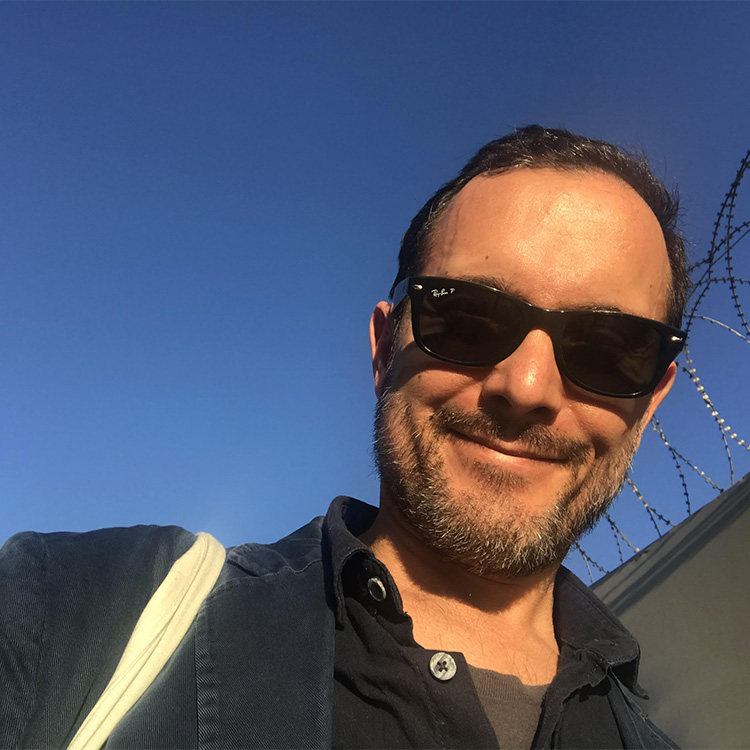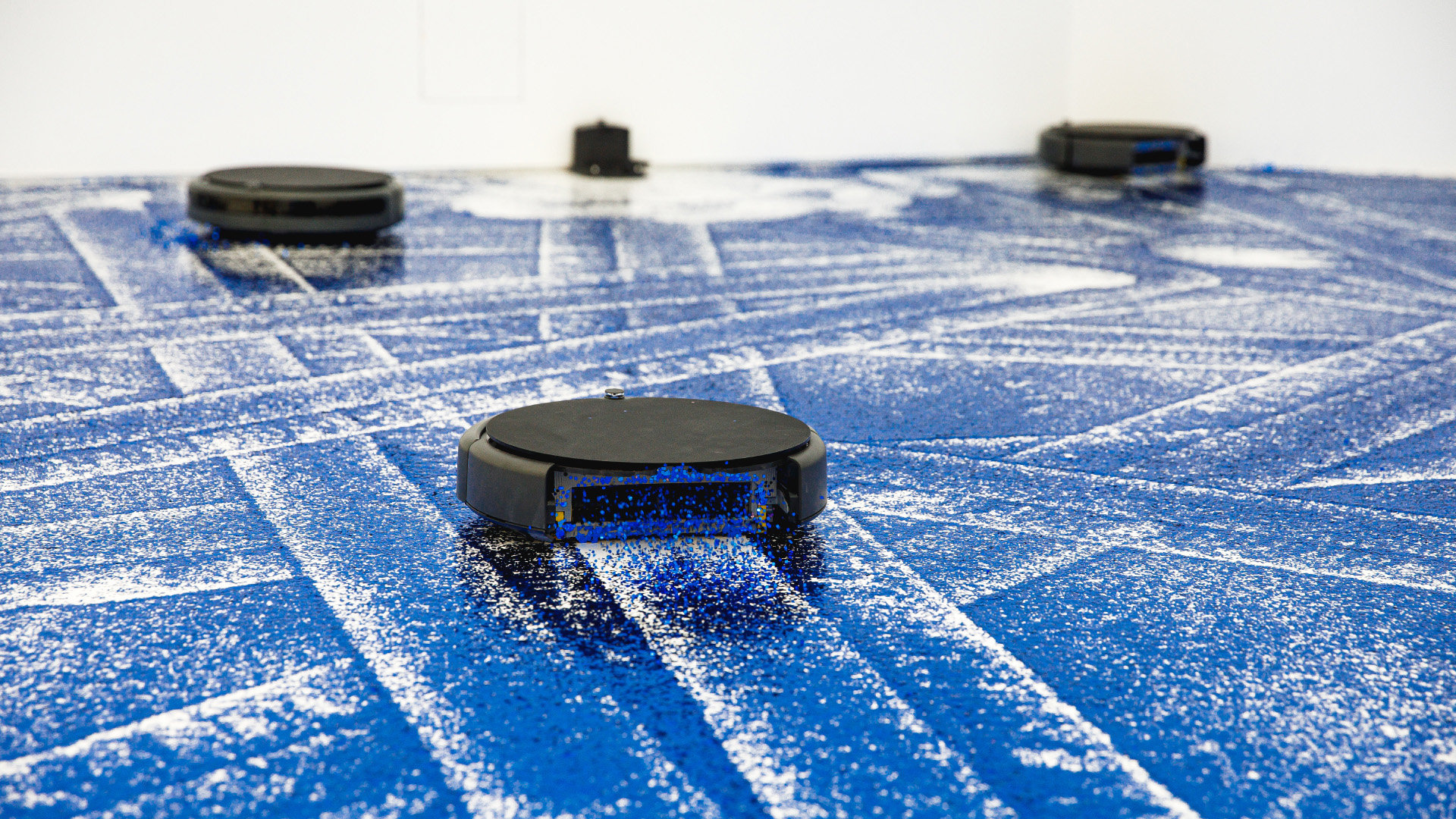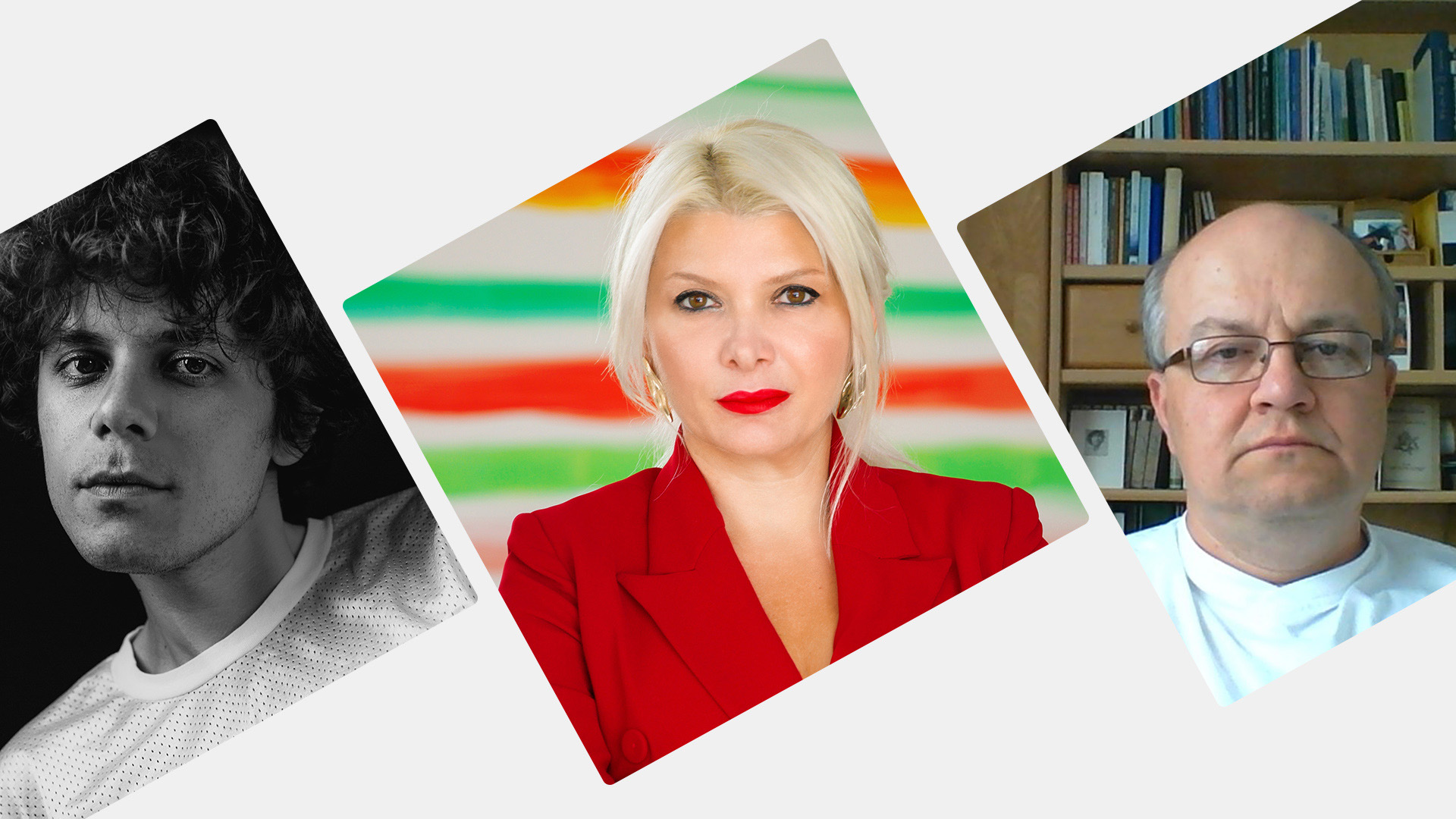Blog
Art, Interaction, and Art History
21 November 2020 Sat
The Borusan Contemporary Art Collection constantly renews itself and by its very nature it has to do so; in technical terms, the collection stands out with a focus on new media, sculpture, video, photography, painting and site-specific, mostly light-based installations.

EVRİM ALTUĞ
evrimaltug@gmail.com
In this article, I'll try to articulate a reading of the collection by looking at communication and interaction strategies that the works have with each other; I will also be explaining with what function and vision a collection exists in 2020, on both a local and a global context.
I would like to start my words with the most obvious feature of the organization's collection, which are light-based, site-specific installations. In this context, the historical Haunted Mansion in Istanbul’s Rumelihisarı and the Borusan Music House building on İstiklâl Caddesi, reveal themselves like a “greenhouse” for dreams and content. Over time, many works that have been displayed by attaching themselves to these structures through various activities constitute the most obvious starting point for analyzing the collection, in my opinion. By making both an irony and an analogical beautification here, I hope my words can be better understood with the term (En)light(enment).
These light-based contemporary artworks symbolize—with a positive provocation— and almost aesthetize the structural bond that the institution establishes with technology, science and reason. In this respect, the works become an endless source of inspiration and possibility for both the public and the workers with a fascinating delight of illusion.
Likewise, in the universal language of art, the works appropriate themselves and each other with their many sizes, forms and colors that transcend flags, beliefs, and race. I would like to argue that this situation carries a child-like sense of curiosity, fun and innocence, as well as daring for the potential to symbolize the "cultural policy" of an institution.

Ivan Navarro, Shortcuts, 2005.
When we scrutinize the effect of these light-based works both in offices and in arts and culture spaces, the potential of the works to transform life and space is tremendous. While some of the artists who are aware of this possibility impress us with their optical creativity, some reveal their conceptual or grammatical skills.
For example, Maurizio Nannucci's neon work, which he produced by choosing a warm color, turns an English phrase / aphorism containing Sufi or Zen sense into life by subverting it. Saying "Blending the visible with invisible", Nannucci feeds on a constructive philosophy of doubt, also producing a conceptual landscape, and drops the opposite of the reflection produced by the idea to the bottom of the text. The artist echoes the same provocative simplicity with the vertical "Listen to your eyes", which he opens to the hearts and minds with the yellow neon. In Nannucci’s work "Movement" in the collection, it is recorded as another proof of the same productivity. The artist, who colors the letters that produce the word “Move” with bright lines, superimposed on each other, salutes both the work we mentioned before and the one before it; with this work, he propels the mind and emotions into movement.
Ruby Anemic's 2013 work in which he produced the phrase “No Guts No Glory” with a graffiti flare, or the master Sarkis’s writing by hand in Turkish, dripping white neon on black for “Light of Darkness” with a modest intensity; the 2011 work “The Language of Diplomacy”, which is at the intersection of criticism and humor; the word 'Hiring' opens to interpretation labor and visibility can be provided as similar examples.
The creative and constructive exploration climate that the works establish with space within the freedom of abstraction comes one after the other with the examples of many signatures in this bright art branch in the collection, including the 'pink time' cracks in 2008 that Bertrand Ivanoff “wrapped around the art center facade” in 2008, Ivan Navarro's fascinating trio “shortcuts” from 2005 at the Borusan Art Center, Brigitte Kowanz's triptych mirror with the code named “ETC”, dated 2011, which compliments the impermanence of life; “Ready Remake No 1” dated 2012 with a urinal halo in which the light painter François Morellet, crowning the collection with his many works, commemorates Marcel Duchamp, the father of modern art.

Jim Campbell, Exploded View, 2010.
Photograph: Özge Balkan.
Among the other works that draw my attention in the collection in this vein are the “Ballroom Chandelier Installation” (2007) by Keith Sonnier, installed on the ceiling of the Haunted Mansion, the “Multicube” presented by Pawel Pomorski in 2008, and the striking Alejandro Almanza work “153.68 Net Working Hours”, in which the artist praises labor through a case of mined materials.
Let's now take a look at New Media Art, one of the most intense disciplines that prove the richness of expression and form in the "world view" of the institution through the collection:
Here, too, we encounter revolutionary examples of what technology and science can lead to when entrusting themselves to culture and art. With their works, the artists leave the audience with the radical visual, auditory and sensory “texts” in this art form, which almost relinquish the banality of the world, proving again and again that life, knowledge and perception do not correspond to a single term and description. Just like the artist Rafael Lozano Hemmer, who rose to prominence with the “Vicious Circular Breathing” exhibition in 2013, or Bengü Karaduman, who presented nature with a naive, dramatic and therefore powerful variable portrait with her work Qualia in 2009.
In this respect, Shirley Shor's 2010 work “Self Portrait”, Go Watanabe's 2008 work “Face”, Christa Sommerer and Laurent Mignonneau's “Portrait on the Fly”, Alan Rath's “Flying Eye Frames” (2009) and “Watcher VIII” produced in 2011 could also be considered.
The artists, who reflect the world back to us with the most innovative attitudes and forms possible, also present pressing contemporary issues such as nature, civilization and utopia and dystopia, which they interpret in this part of the collection. To give examples of works that can be claimed to be in dialogue with each other in this field, Joanie Lemercier's work “Landform” dated 2015, John Gerrard's solar-field and pig farm themed digital installations, or the huge tree branches left under the balcony eaves of the Haunted Mansion, Thierry Dreyfus's wonderful installation named “Our Dreams Remain Our Dreams” from 2013 can be mentioned in this regard. In this context, another site-specific project that deeply impresses me is by Allard Van Hoorn. In his work named “034 Urban Songline” from 2015, the artist produces a seductive electronic landscape by sending the sound of the waves hitting Istanbul Fındıklı Park onto a digital sound editor and screen. Likewise, Carsten Nicolai brings us a short film in his work "Future Past Perfect: No 6 for Istanbul", which originated from the Bosphorus. Minimalist new media artist Jeffrey Blondes demonstrates a similar poetic attitude in a digital painterly style, presenting his work titled "Revelation: Four Days" dated 2018, interpreting the four seasons.

Gülsün Karamustafa, Insomniambule, 2011.
The field of painting, on the other hand, reveals its mission in the collection with an open look with the same sense of accompaniment and functionality that we have summarized above. Features such as rhythm, color, pluralism, simplicity celebrate a visual syntax common in works of many different figures, varying in style across abstract expressionism, minimal, figurative expressionist or tachism. The collection includes unique works of artists such as Kemal Önsoy, Bedri Baykam, Abdurrahman Öztoprak, Ekrem Yalçındağ, who touched on different trends and history even within the course of their own careers; when we look at the artists featured in the collection from outside of Turkey, we see a visual praise of the meticulous, fluid, admirable and unique atmosphere produced by creative energy. In this regard, the works by artists Chris Gallagher and Jerry Zeniuk could be highlighted. Speaking more specifically about Zeniuk, the universal beauty efforts aimed at transforming the world in which the images loaded with colors are reflected in the plastic, as well as the philosophical context of the artist, overlap with the aim of the collection. However, in the collection, some artists who only have a single work in the collection, still show up with the same feelings in unison. These artists include Ian Davenport, Tim Bavington, Lisa Nankivil, Adrienne Farb, Beverly Fishman, Michael Scott, Markus Linnenbrink and Yağız Özgen.
On the other hand, Herve Heuze's acrylic on canvas, blue and white abstract expressionist depiction of nature “Les Abimes” dated 2006, Renee Levi's abstract expressionist work with an infinity reference from 2003 or Fevzi Karakoç's “Sacrifice Row” composition dated 1991, are also very striking works from the collection.
When we look at the collection of photographs from the Borusan Contemporary Art Collection, featuring almost 180 works, we see a rich range produced by different styles and historicalities. However, it is noteworthy that with the light-based installation and neon works we have already mentioned, have a kinship highlighted by the photographs, winking at the context. For example, artists such as A. Halim Kulaksız, Niko Luoma, Thomas Ruff, Boomoon, Seçkin Pirim, In Sook Kim, Ola Kolehmainen, with their formal attitude and unique expressive skills, carefully filter the aesthetic principles of the language of abstract expressionism, which is committed to freedom, through their lenses.
However, the photography collection brings us many interpretations in poetry, both in monochrome and in color of the surreal, paying homage to the feeling of landscape inherited from the language of painting. Some of them contain a documentary anxious taste of monumentality, as we have seen in artists such as Ahmet Ertuğ, Axel Hutte, Reinhard Görner, Lawrence Beck, Domingo Milella, Sıtkı Kösemen, Miru Kim and Massimo Vitali. Chen Jiagang, David Parker, Olaf Otto Becker, Nuri Bilge Ceylan, Michael Kenna, Edward Burtynsky, Axel Hutte, David Drebin, Ellen Kooi, Frank Thiel, Hans Gasser brought a brand new aesthetic search and painterly emphasized both natural and historical spaces. We should also mention artists such as Hamra Abbas, Lynn Davis, Sebastiao Salgado, Serkan Taycan, Jose Maria Mellado, Thomas Ruff, as well as the masterful Robert Mapplethorpe, whose stance and approach belonged to the history of art and deserves a separate space in terms of plastic values.

Reinhard Görner, Shining Wall Of Books, New Haven, USA, 2017.
Borusan Contemporary knows how to show "taste" with artistic figures and works that reflect both its experimental and conceptual selectivity in sculpture. As seen in the new media art, light-based works, and painting and photography, which we have articulated with an emphasis on color, texture, rhythm and energy, it seems possible to experience the same emotional companionship with many works in this art branch. To give an example in this context, we could talk about Ryan David, Kathy Webster, Beat Zoderer, Robert Currie, Eun Mi Chae, Engin Beyaz, Martin Walde, Peter Vogel, Alexandre and John Gailla, Paul Schwer, Kirstie Rea, Ayşe Erkmen, Liam Gillick. It seems right to mention Beat Zoderer, Andrew Rogers and Dan Bleier here, along with several other works.
The selection of sculptures refreshes its own richness with many works that range from figurative-abstract expressionist to works that make innovative use of material. The collection, which is riveted by the different and valuable works of Björn Schülke—who pays homage to modern art—, Ernest Trova, Jim Dine, Ardan Özmenoğlu, Cracking Art Group, Kathrin Stumreich, Kutluğ Ataman and Burak Bedenlier. The approach in the field of painting is as fresh and charged with contemporary responsibility as the other artistic media, evoking the richness of expression and the fluxes of form.
The collection faithfully takes over its responsibility for original print art to the elements of aesthetic taste that we have been talking about since the very beginning of this article. In this manner, names such as Peter Coffin, Paul Schwer, Sol LeWitt, Imi Knoebel, Mel Bochner, Peter Halley, Jim Dine, Beat Zoderer, Roy Lichtenstein, Donald Judd, Alexander Yediler, Jerry Zeniuk and Alex Katz are on the list we have mentioned so far. They are newly included, or some of them reappear in the collection with their works in this discipline. Critical figures from modern Turkey, including Erol Akyavas, Ali Teoman Germaner (Aloş), Berna Türemen, Devabil Kara, Devrim Erbil, Nazan Erkmen, Fevzi Karakoç, Solomon Tekcan, Mustafa Pilevneli and Hüsamettin Koçan should also be referred to here.
Finally, as a part of Borusan Kocabıyık Foundation, Borusan Contemporary is centered on the principle of being a pioneer in intellectual, visual, and visionary contributions to the memory of contemporary art in Turkey. Their insistent interest in this field has been shaped by the selection of video art that has formed their cultural identity. This art form that needs to be encouraged as collectible in Turkey; through their innovative approach, they have made a substantial investment in this form, taking ownership of the global scene as well as the art history in Turkey.
In order to reap the benefits of this ambitious compliment, it would suffice take a look at the names of Turkish artists in the collection: Ali Kazma Kutlug Ataman, Aslı Çavuşoğlu, Bengü Karaduman, Gülsün Karamustafa, Başak Kaptan, Nasan Tur, Cevdet Erek, Erdal , Refik Anadol. The works of artists such as Ergin Çavuşoğlu, Esra Ersen and Özlem Uzun have become a valuable archive for us to see the future path their art has taken up to the present. When we look at the global examples of the relevant form, along with works such as Kwan Sheung Chi, George Barber, Hannu Karjalainen, Elena Kovylina, who make contact with performance art, Rick Silva, Wang Wang Sishun, Eelco Brand, Miguel Many names like Chevalier, Levi Van Veluw, Jennifer Steinkamp and Claudia Hart seem to be waiting to be discovered.
Instead of the result, the Borusan Contemporary art collection draws attention with its position that immerses art into living spaces and life into the depth of the works. With the uncompromising variety of expressions it creates in today's collection, the organization self-assuredly guides the future of the public opinion to the new, unexpected and universal, in perfect harmony. The light of illumination takes its source from the history of international art and culture produced by the interaction between the works.
ABOUT THE WRITER
Evrim Altuğ studied at the Marmara University Fine Arts Faculty Cinema - Television Department and Istanbul Bilge University Communication Faculty Stage and Performing Arts Department (with a scholarship); he participated in the Design Culture and Administration Certificate Program. In 2003, he was one of the founding members during the relaunching of the International Art Critics Association - AICA Turkey. Altuğ was the president of the association for two terms and is still a member of the board. He writes on arts and culture across various print and digital media, including Art Unlimited, Gazete Duvar, Hürriyet Kitap-Sanat and Arkas News. He continues the program Yolgeçen on Açık Radyo with Rahmi Öğdül and he was selected for the writers’ program launched by SAHA in 2019. He continues his journalistic work on arts and culture as part of Açık Dergi on Açık Radyo, edited by İlksen Mavituna. Altuğ has recently been appointed the director of Zilberman Gallery Istanbul.



